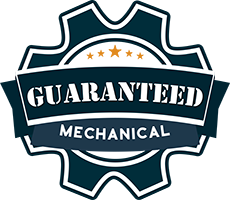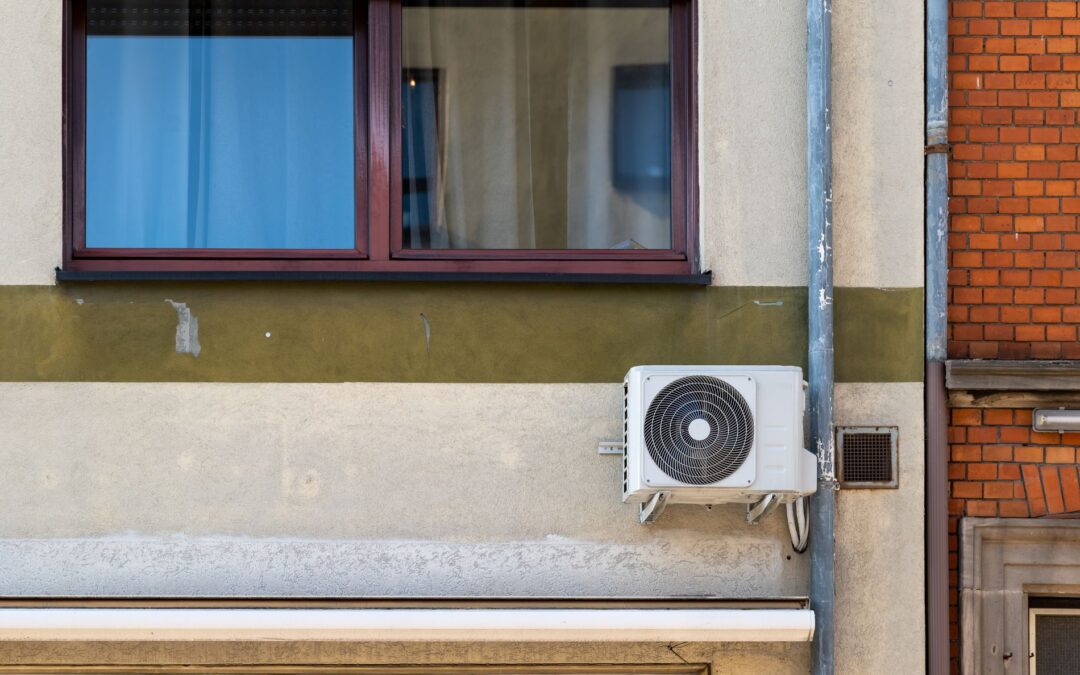Humidity can make your home feel warmer than it is, especially during Aurora’s summer months when the air is already heavy and sticky. A working heat pump plays a big role in keeping indoor humidity under control. When it’s functioning properly, it helps pull moisture from the air, leaving rooms more comfortable and less prone to musty odors. But when that built-in dehumidification stops, it doesn’t take long to notice the difference.
Suddenly, normal daily activities like cooking or showering seem to raise the humidity levels indoors. The air feels damp, your skin feels sticky, and your home’s overall comfort drops. If your heat pump no longer pulls moisture from the air like it used to, there’s usually a reason and it’s something that should be addressed before it gets worse.
Signs Your Heat Pump Is Not Dehumidifying Properly
When your heat pump stops dehumidifying, you’ll notice it from both the way your house feels and how you experience everyday routines. These signs tend to build gradually, but once they show up, they’re hard to ignore. Identifying them early makes it easier to find out what’s wrong with the system.
Here are common warning signs that your heat pump is no longer removing moisture as it should:
– The air feels damp or muggy, even when your system is running
– You start to see condensation on windows, especially in the mornings
– Rooms develop an unpleasant, musty smell
– Wood furniture or floors feel sticky to the touch
– You notice more dust and allergens settling on surfaces
– You feel more uncomfortable during regular tasks, such as sleeping or cooking
A homeowner in Aurora recently mentioned that despite their thermostat staying at 72 degrees, their upstairs felt stuffy and uncomfortable. Their windows stayed fogged up well into the late morning, and they had started buying more fans to fight the heat. These are all signs that point to a heat pump no longer managing moisture in the home.
If the system seems to be cooling but not dehumidifying, the performance issues might be hidden deep within the unit or the airflow path. Ignoring these symptoms could lead to bigger HVAC repair needs down the road, especially as strain builds up within the system.
Common Causes of Dehumidification Failure
When moisture isn’t being pulled from the air, the heat pump is no longer doing everything it’s designed to do. While poor dehumidification could feel like a sudden problem, the actual cause usually develops over time.
Here are some of the most common reasons a heat pump stops removing humidity effectively:
- Clogged or dirty filters: Airflow is critical for proper dehumidification. If the filters are packed with dust and debris, the system can’t move air freely, and moisture removal drops quickly with the reduced circulation.
- Low refrigerant levels: Refrigerant helps absorb heat and moisture from your home’s air. If there’s a leak or the levels are low, your system might cool less effectively and struggle to condense humidity.
- Faulty or incorrect system settings: Sometimes, someone may switch the fan setting from “Auto” to “On.” This causes the fan to run nonstop, blowing moist air back into your home before the system has a chance to remove humidity.
- Blocked drainage or frozen coils: A blocked condensate line can prevent the system from draining water it pulls from the air. Frozen evaporator coils, meanwhile, prevent proper heat exchange and affect dehumidification.
- Oversized system: If your heat pump is too powerful for your space, it will cool the air quickly but not run long enough to remove humidity. Quick cycles could leave the air damp and incomplete in comfort.
Each of these issues can affect how well your system performs. Some require a simple inspection, while others may point to parts needing repair or replacement. Because many of these issues are not visible to the naked eye, it’s best not to wait too long before calling for help. A small problem today might turn into a much larger HVAC repair need tomorrow if left unchecked.
Steps to Take When Your Heat Pump Stops Dehumidifying
If your heat pump is still running but the humidity won’t go down, there are a few quick steps you can take before calling in a technician. Some of these could point you in the right direction or even get the system back to doing its job.
Start with these:
– Check the thermostat settings. Make sure the fan is set to “Auto” instead of “On.” This helps the system cycle properly so it can remove humidity during cooling.
– Inspect the air filter. If it looks gray or full of dust, replace it. A clean filter allows air to flow smoothly, helping the heat pump do a better job at dehumidifying.
– Peek around the indoor unit for any signs of moisture buildup or flashing warning lights. Pooled water could suggest a drainage issue.
– Listen for strange sounds from the outdoor unit, which could point to a refrigerant or compressor problem.
These steps might help restore basic dehumidification if the problem is simple. But if the system still blows cool air without pulling out any moisture, then the issue likely runs deeper. A clogged condensate line or worn component is not something easily visible or fixable without professional equipment. Any delays could allow humidity to keep building up and that can impact more than comfort. It might lead to indoor air issues or even affect your HVAC system’s lifespan.
Why HVAC Repair Helps Restore Comfort
When it comes to comfort in Aurora, dry, cool air helps you feel better across your entire home. That’s why prompt HVAC repair matters when a heat pump stops removing humidity. What starts as a small dip in performance can get worse over time and those short cooling cycles or humidity spikes don’t just hurt your comfort. They put unnecessary wear on the system.
Our technicians can inspect refrigerant levels, confirm correct airflow, and remove blockages that interfere with how your system drains and cools. They don’t rely on guesswork or quick fixes. Instead, they look at the full system function to diagnose what’s holding back proper humidity control and restore it the right way.
When humidity isn’t managed well inside your home, it can also begin to affect physical items, not just the air. For example, wood floors and cabinets may swell slightly when excess moisture builds up. You might also begin to notice condensation showing up on electronics or glass surfaces more often.
That’s why resolving a dehumidification issue isn’t just about feeling cooler. It’s about protecting both your comfort and the condition of your home.
Keeping Your Aurora Home Comfortable Year-Round
During the summer in Aurora, humidity control plays a major role in how livable your space feels from morning to night. If your heat pump is running but failing to remove moisture, something is likely off within the system. The sooner that problem is identified, the sooner your home can return to normal comfort.
Whether it’s a simple airflow issue or a more complex mechanical fault, responsive HVAC repair helps stop the problem from turning into something larger or long term. A properly working heat pump isn’t just about temperature—it also helps keep humidity in check and your indoor air feeling right.
Routine inspections and timely service go a long way in keeping things running smoothly. With the right attention, your system can keep your Aurora home cool and comfortable across the warmest months of the year.
At Guaranteed Mechanical, we know how quickly a failing heat pump can affect your comfort in Aurora, so when you notice persistent damp air or unusual system sounds, consider scheduling HVAC repair in Aurora to prevent further issues. For a quick estimate or to book a service visit, please contact us today.




Recent Comments